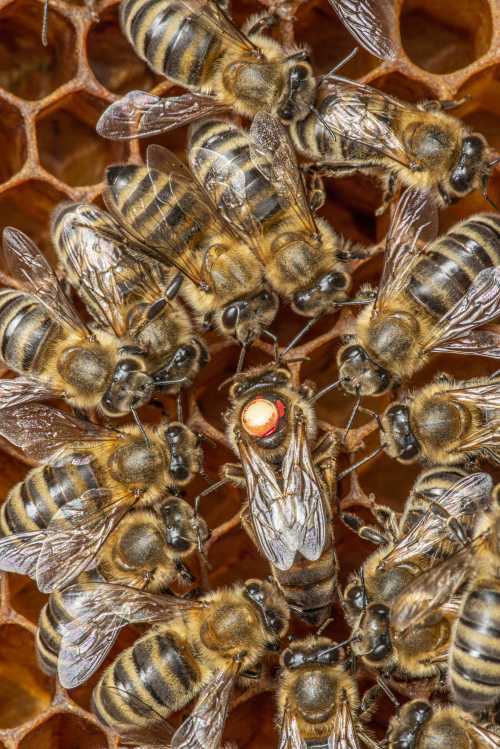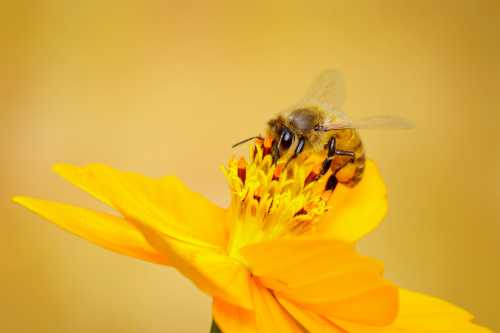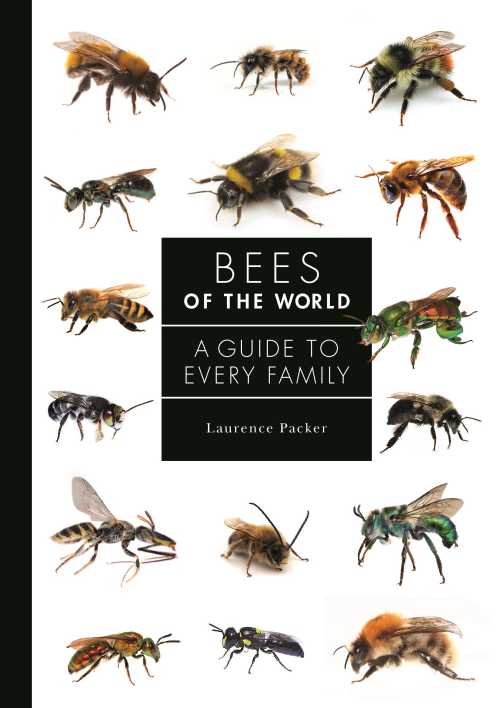Do Bees Have An Internal Clock - Functions Of Circadian Clock In Bees?
Elsewhere on this site, I have written about night-active bees – see my page ‘Do Bees Fly At Night’, which discusses the foraging behaviours of bees (mostly tropical species) known to forage at night or in twilight hours.
This got me thinking about circadian rhythms and the internal clocks in bees. I decided it was time I wrote about it!
But firstly…
What Are Circadian Rhythms And Internal Clocks?
Circadian rhythm
Circadian rhythms are natural responses occurring in animals, plants and even microbes, primarily to light and dark, and that follow a 24-hour cycle. These responses can be physical, mental, or behavioural1.
An example of a circadian rhythm is visible in sleeping /activity patterns in response to night and day1, although species may respond to the light and dark differently (consider moths versus butterflies).
Internal Clocks
The Internal Clock (or biological clock) regulates an organism’s circadian rhythm, and is the organism’s natural timing device. The internal clock is composed of specific protein molecules found in most of the organism’s tissues and organs, and which interact with cells throughout the body1.
Do bees have an internal clock and circadian rhythm?
Yes, a number of scientific studies suggest that the behaviours of bees are
regulated by an internal clock and display circadian rhythm, but not always,
and it appear that other factors may be dominant!
For example, scientists such Bloch et al (2002)2 have shown that reverted nurse bees in honey bee colonies (i.e. foraging workers that then returned to the worker job of nursing) do not show circadian rhythm.
Shemesh et al (2010)3 showed that social environment plays a role, and that the presence of brood is the likely influencing factor, since young bees caged with brood demonstrated no circadian rhythm, whereas those cages without brood do.
They state that:
“Forager bees have strong circadian rhythms, whereas "nurse" bees typically care for the brood around-the-clock with no circadian rhythms in behavior or clock gene expression.”
What function does the circadian clock have in bees?

A paper by Giannoni-Guzmán et al (2021)4 references a number of studies that in summary, suggest the role of the circadian clock is associated with key behaviours and functions in honey bees that serve to drive the survival and fitness of the colony:
Reproduction
Mating between drones and a queen, is associated with the circadian clock, and occurs at a specific time of the day (queens and drones take their mating flights at the same time).
Foraging
The ability to tell the time of day enables foraging honey bees to remember the timing of food availability, as well as its location, for a number of days.
(Furthermore, honey bees can learn scents or colours in a time-linked process, and remember them in a 24 hour cycle according to Zhang et al (2006)5 citing Koltermann, 1971).
Telling the time and dance communication
Foragers also rely on the circadian clock for time-compensation, an essential component of their sun-compass navigation (the circadian clock is used to calibrate the sun compass) and dance language communication functions.
Zhang et al5 (citing (Moore-Edeet al, 1982) state that:
"circadian systems permit organisms to measure time for adaptively significant purposes, and that bees synchronize their behavior with daily floral rhythms, foraging only when nectar and pollen are at their highest levels."
Do circadian rhythms affect plant pollination?

Yes, circadian rhythms affects foraging behaviour, which in turn affects pollination.
Bloch et al (2017)6 note that:
“There is solid evidence that pollination-related traits of both plants and bees are under circadian control, and evidence that diurnal rhythms can affect various ecological processes”.
They also postulate that the intricate interaction between plant and pollinator circadian rhythms may be susceptible to man-made disruption (which they refer to as ‘anthropogenic’), such as the introduction of alien invasive species, or the use of pesticides or other environmental pollutants.
References
- National Institute of General Medical Sciences https://nigms.nih.gov/education/fact-sheets/Pages/Circadian-Rhythms.aspx
- Bloch G, Sullivan JP, Robinson GE. Juvenile hormone and circadian locomotor activity in the honey bee Apis mellifera. J Insect Physiol. 2002 Dec;48(12):1123-1131. doi: 10.1016/s0022-1910(02)00205-6. PMID: 12770035.
- Shemesh Y, Eban-Rothschild A, Cohen M, Bloch G. Molecular dynamics and social regulation of context-dependent plasticity in the circadian clockwork of the honey bee. J Neurosci. 2010 Sep 15;30(37):12517-25. doi: 10.1523/JNEUROSCI.1490-10.2010. PMID: 20844146; PMCID: PMC6633448.
- Giannoni-Guzmán MA, Rivera-Rodriguez EJ, Aleman-Rios J, Melendez Moreno AM, Pérez Ramos M, Pérez-Claudio E, Loubriel D, Moore D, Giray T, Agosto-Rivera JL. The Role of Colony Temperature in the Entrainment of Circadian Rhythms of Honey Bee Foragers. Ann Entomol Soc Am. 2021 May 26;114(5):596-605. doi: 10.1093/aesa/saab021. PMID: 34512858; PMCID: PMC8423108.
- Zhang S, Schwarz S, Pahl M, Zhu H, Tautz J. Honeybee memory: A honeybee knows what to do and when. J Exp Biol. 2006 Nov;209(Pt 22):4420-8. doi: 10.1242/jeb.02522. PMID: 17079712.
- Bloch G, Bar-Shai N, Cytter Y, Green R, 2017; Time is honey: circadian clocks of bees and flowers and how their interactions may influence ecological communities. Phil. Trans. R. Soc. B3722016025620160256
Bees Of The World - Book Review
If you found this page helpful or interesting, I'd really be grateful if you would share it with others - if not this page, perhaps another, such as Gardening For Bees.
Thank you so much :) .
